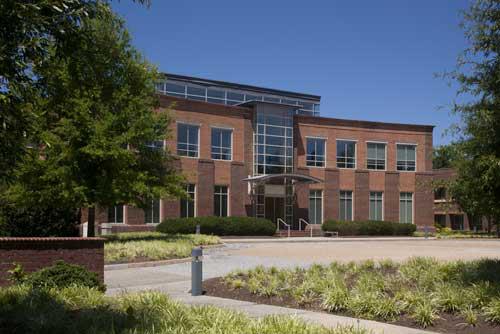
The Rockefeller Library
The first thing you notice is the clothing. Walking down Duke of Gloucester Street in Williamsburg, the people of the Revolutionary City are attired in all types of fashion.
The clothes suit the person’s place in society. A tradesperson is immediately distinguishable from a well-to-do lady, an enslaved person from a middling sort.
The sights have changed fairly dramatically from several decades ago, when hoop skirts and finery were more the norm. Our evolving understanding of what people really wore on a daily basis is the basis of changing attitudes and deeper research.
When Colonial Williamsburg was founded, the emphasis was more strongly on heroic leaders and elites. Today the founders share the stage with Virginians from all walks of life. It’s a richer tapestry of life in the Revolutionary era.
Research has also increased our understanding of what people wore. And not just on the outside. The last thing you notice in Williamsburg is the clothing under the dress or the waistcoat. The underwear.
Elisabeth Gernerd, a Ph.D. candidate from the University of Edinburgh, recently spent a month in town researching that very subject. She was the beneficiary of a short-term residential fellowship at Colonial Williamsburg’s Rockefeller Library, located just across the railroad tracks that run alongside the Historic Area.
The Rockefeller, home to a distinguished collection of manuscripts, prints and other primary sources, has been hosting visiting scholars since 2003. On average, two fellows are in town at any given time of year. Many reside in the Historic Area.
We talked with Gernerd about her research on 18th-century underwear and her experience in Williamsburg.
CW: Could you give me the layperson’s overview of your research topic?
EG: My research examines the social and cultural aspects of eighteenth-century underwear and accessories. The garments I have chosen to work with include wrapping gowns (dressing gowns), calashes (boned bonnets), cork rumps (bustles), muffs and stays. I look at a wide range of sources including surviving artifacts, visual portrayals in painted portraiture and graphic satire, and textual accounts in publications and manuscripts.
By examining the material, visual and textual manifestations of these garments, I am able to probe how these garments are linked with themes of mobility, time, self-expression and agency. I actually don’t work on drawers, or linen in general.
CW: What led you to underwear as a research topic?
EG: I am interested in the structural appendages, such as stays and rumps, which amend and shape the dressed body. My interest in eighteenth-century underwear was sparked doing my undergraduate dissertation and then seems to have spiraled from there to include a selection of accessories and undress.
I am particularly interested in fashion’s role in satirical prints and what those images can tell us about the society depicted in them, as well as what they reveal about the wider cultural currents of the late eighteenth-century.
CW: Why did you want to visit Williamsburg to do research?
EG: I wanted to work at Colonial Williamsburg because of its diverse selection of research offerings. At Williamsburg, I was able to access a wealth of manuscripts and secondary sources within the library’s collection, as well as the surviving garments and satirical prints in the museum’s collection.
I was also able to collaborate and work hands-on with the staff of the Margaret Hunter Shop. At the shop, I was able to strengthen my knowledge of construction, as well as gain a unique research perspective of wearing and making dress.
Satirical prints hang above Elisabeth Gernerd’s research desk at the Rockefeller Library during her stay.
CW: What did you discover in Williamsburg? Any fun finds?
EG: In Special Collections, I found some very useful references within diaries, such as an aunt buying a dressing gown for her nephew. I was also able to access account books, which are a great source for tracking patterns of wear.
But the fun finds were really located in the print room in the off-site storage of the DeWitt Wallace collection. There I found a selection of prints and sketches, which to me are like gold dust and I can’t wait to incorporate them into my dissertation.
One of the dolls in the museum collection (and a long conversation with Mark Hutter) also confirmed a particularly nagging question that I was facing about the straps of eighteenth-century stays.
CW: In terms of your research, was there much difference between colonial America and 18th century Britain?
EG: Thus far, my research has shown that colonial America was just as driven to look fashionable as Britain, and despite political allegiances, this continued to mean keeping up the latest British and continental fashions. While there were variations, particularly due to climate, fashion, in actual practice, seems to have often overridden patriotic ideals. This is particularly evident when looking at what was imported and sold by colonial tradesmen.
CW: How was your stay in Williamsburg?
EG: My time in Williamsburg was fantastic. I was able to stay in the Historic District with one of the apprentices at the Margaret Hunter Shop, which meant many a long discussion about eighteenth-century dress history into the wee hours of the night.
I was also lucky to have a fellow fellow, Stephanie Seal, who became a great friend and accomplice in both research and exploring Williamsburg, particularly the culinary delights of the Cheese Shop.
Gernerd’s research, along with that of many other Rockefeller fellows, promises to expand our knowledge of early America and bolsters the foundation’s mission: “That the future may learn from the past.”